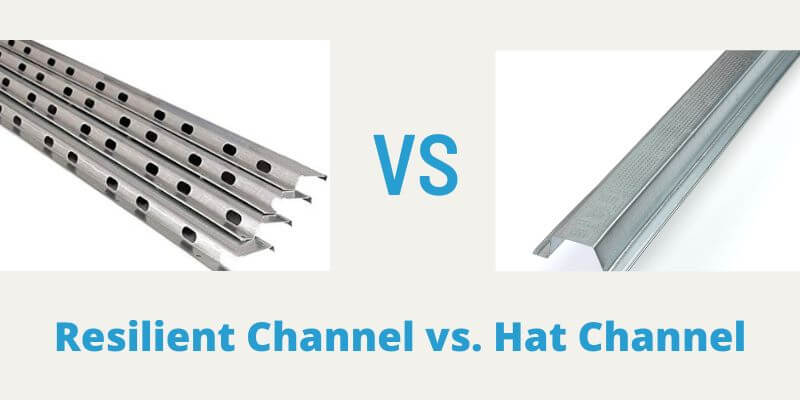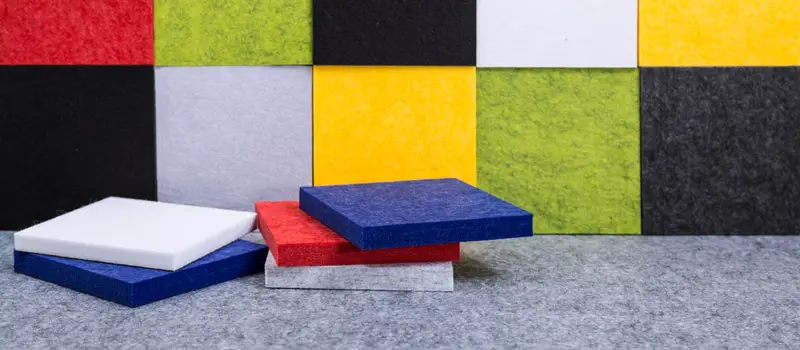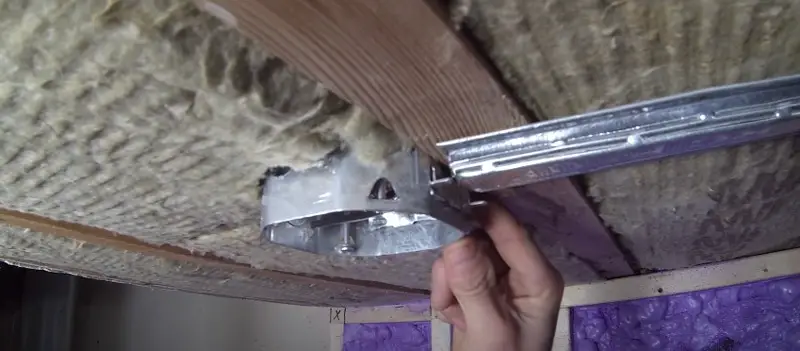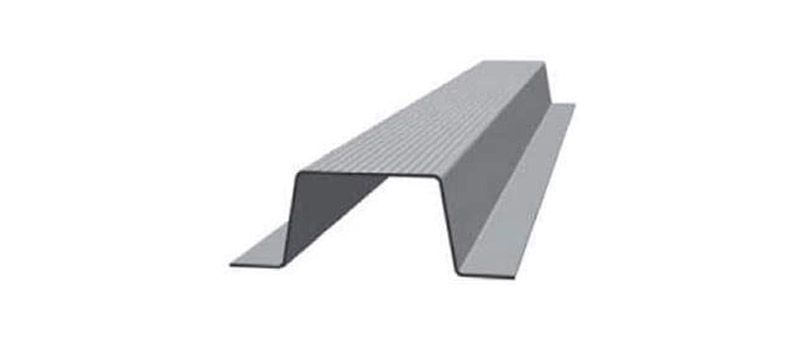When trying to make your home soundproof for a peaceful and quiet space, one of the many steps involved in improving the Sound Transmission Class, STC, of the partitions. However, it always comes down to two options, the resilient channel and the hat channel.

While there’s a lot of argument about which is better, it actually boils down to your home’s structure and individual projects. Hence, it’s essential to understand the principle of acoustic decoupling and the contribution of hat vs. resilient channels to the feat.
Without further ado, let’s check out the difference and similarities of both options to ensure you make the right pick.
What’s Acoustic Decoupling?
Acoustic decoupling is one of the best methods for blocking out noise, especially impact noise, by employing the air space between the insulation wall and stud.

Noise travels through walls or ceilings. Hence, it’s crucial to use soundproofing materials or these building techniques to separate the insulation layer and drywall from the building members. Thus, the specialized channels or clips help limit the transmission of sound and vibration waves. Even better, it’s effective for absorbing high sound waves. Sadly, it creates a disturbing low-frequency vibration and resonance.
While acoustic decoupling decreases high-frequency sound waves, adding sound insulation and extra drywall helps attenuate the low-frequency vibrations. In addition, utilizing MLV or a viscoelastic compound helps dampen the sound and boost the acoustic decoupling effect.
Resilient Channel
A resilient channel is a relatively thin metal strip designed to bend in such a way as to create enough air room between the drywall and studs. This acoustic treatment features spring characteristics to help manage sound waves.

For this type of channel, the drywall must be separated from other surfaces, including the floor, ceiling, and other walls. This way, it helps knock down any accidental vibrations.
However, it’s common to eventually experience some sort of contact, probably due to sagging or inappropriate installation.
Luckily, if this problem persists and seems to be defeating the purpose, it’s best to fill the air space between the stud and insulation wall for better soundproofing results. Also, you might add another layer of plasterboard for more mass, provided the channel can provide the much-needed support to prevent sagging.
In short, this perforated strip material is a decent choice for decoupling walls and limits the transmission of sound whatsoever. It can boost the STC rating up to 10 points. More importantly, ensure the resilient channels are appropriately installed since they break down quickly.
Hat Channel
A hat channel is a decent option for people looking to manage the noise inside a room. This acoustic treatment was initially used for concrete and masonry surfaces alone. However, other structures seem to be benefiting from this type of channel.

Hat channels are strong, thanks to their sturdy construction. They are made of aluminum or galvanized steel. This soundproof material is best attached to the studs horizontally. At the same time, the channel’s brim part is nailed to the structural points.
Furthermore, it’s available in different sizes to meet a wide range of soundproofing requirements. However, it’s vital to pick a solid channel to serve your purpose for the long term.
Suppose you intend to install the hat channel yourself. In that case, we suggest purchasing aluminum hat channels since they are much easier to work with than their steel counterparts. Like a resilient channel, this material can increase the STC by 10 points. Plus, it delivers an incredible level and smooth surface, making the job easier.
We recommend combining this acoustic treatment with other soundproofing options for the best result. This way, you can jump up the STC ratings by more than 20 points. Its relatively hassle-free installation process seems to be getting more people opting for the hat channel.
Resilient Channels vs. Hat Channel – Comparison
Pros of Resilient Channels
Affordable & Practical
When it comes to resilient channel vs. hat channel, the formal is the go-to if you are on a tight budget. Despite its relatively affordable price point, installing the resilient channel provides your home with unrivaled sound insulation.
In addition, it helps cut the cost of adjoining the walls of your rooms while bringing soundproofing properties to your home. Therefore, it’s a perfect choice for homeowners looking to adjoin walls and soundproof rooms.
Impressive STC Rating
A high-caliber resilient channel comes with a very high STC rating of 65. No wonder it’s a common choice for soundproofing homes. However, there are different models or products from many companies with promises that don’t hold water. Thus, you should ensure you purchase the resilient channel from a reliable company or get a recommendation from your local store.
More importantly, when installing a resilient channel, ensure no contact between these channels. Else, it defeats the purpose of using them.
Cons of Resilient Channels
Poor Quality Control
One of the downsides of this soundproofing material is the quality is nowhere near what it used to be decades ago.
Many years ago, resilient channels were known for their higher STC ratings. Today’s products have lower STC ratings because of increasing demand. Although they still deliver excellent soundproofing performance, it’s not comparable to resilient channels’ results in the past years.
Short Circuit
Resilient channels need to be installed appropriately to prevent a short circuit. Also, the weight of the drywall might likely push it through the stud, which results in poor sound insulation and a short circuit.
Pros of Hat Channels
Hassle-free Installation
Unlike resilient channels, hat channels are a breeze to install. It does not require you to hire a professional to help out with the installation. Provided you are handy; you should find working with the hat channels a cinch.
However, it’s essential that you read through the installation manual to know how to snap the channels into clips.
Protects Your Interior Finishes
Another advantage of hat channels is their ability to create an air barrier between your interior finishes and the base. This separation ensures your home is safe from fire and moisture. In some sense, it helps improve your home’s safety, unlike its counterparts.
Even better, the air barrier between the interior finishes and the base ensures your interior does not get ugly and rotten too quickly.
Cons of Hat Channels
Allows Low-Frequency Noise
Hat channels usually feature a double attachment to ensure it provides the much-needed strength to support extra mass. While the double attachment helps improve your soundproofing results and durability, it makes it susceptible to vibration transmission. Hence, you might find these sound vibration movements disturbing and annoying.
Related FAQs
No. If you are concerned about the ease of use of this material, it’s best to choose aluminum hat channels. It’s easier to cut and work with.
Yes. If you have hard surfaces, you might want to use acoustic panels and other soundproofing materials for better acoustic management.
There’s no difference! The names are used interchangeably. Some professionals call it a furring channel, while others know it as a hat channel.
There is some debate over whether a resilient channel makes a difference or not. Some people say that it does, while others say that it doesn’t. There is no definitive answer, as each situation is unique. However, if you are looking to improve the sound quality of your audio system, then adding a resilient channel may be a good idea.
Conclusion
Whether the Hat channel or a Resilient channel, both will create an air barrier for a noise-proof effect. However, you can improve their soundproofing performance by combining the channels with acoustic panels, drywalls, mass-loaded vinyl, etc.
But if you are not looking to invest in soundproofing your room, resilient channels are the best bet. The hat channels are easier to install if you don’t want to hire a professional to help out.
Besides, it’s a clear winner in terms of effectiveness. Remember that hat channels require a double attachment, which allows the passage of sound vibration movements that can be disturbing.
Related Resources:
